

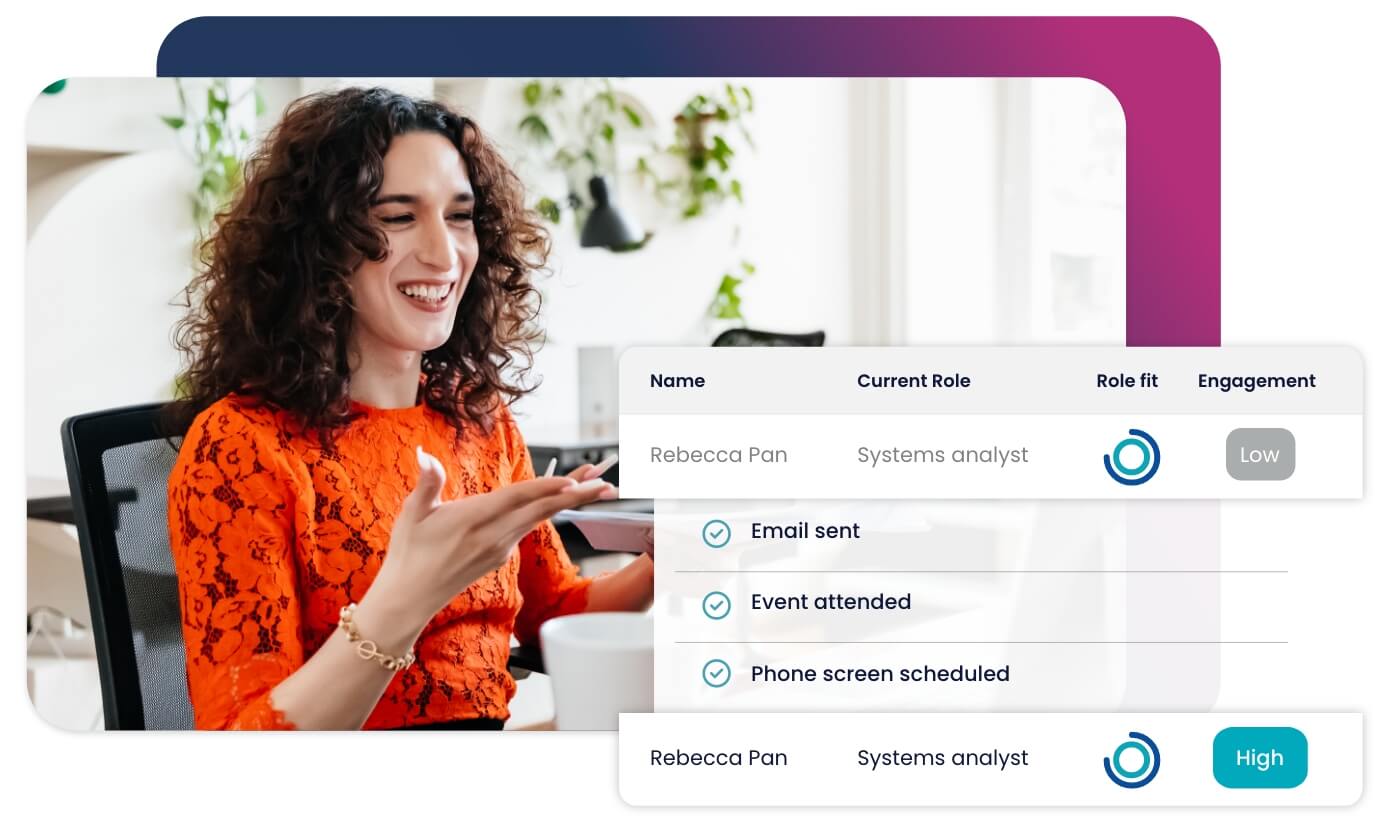



Accelerate hiring key talent to deliver care and exceed patient satisfaction.

Attract skilled candidates, speed up hiring and grow expertise in your workforce.

Simplify recruiting finance and banking talent with a platform for hard-to-fill roles.


Build a talent pipeline that engages and drives your business forward.


See how diverse and global enterprises use iCIMS to employ millions, drive innovation and connect communities worldwide.

Uncover unique market insights, explore best practices and gain access to talent experts across our library of content.


View press releases, media coverage, the latest hiring data and see what analysts are saying about iCIMS.


Streamline your tech stack and take advantage of a better user experience and stronger data governance with ADP and iCIMS.
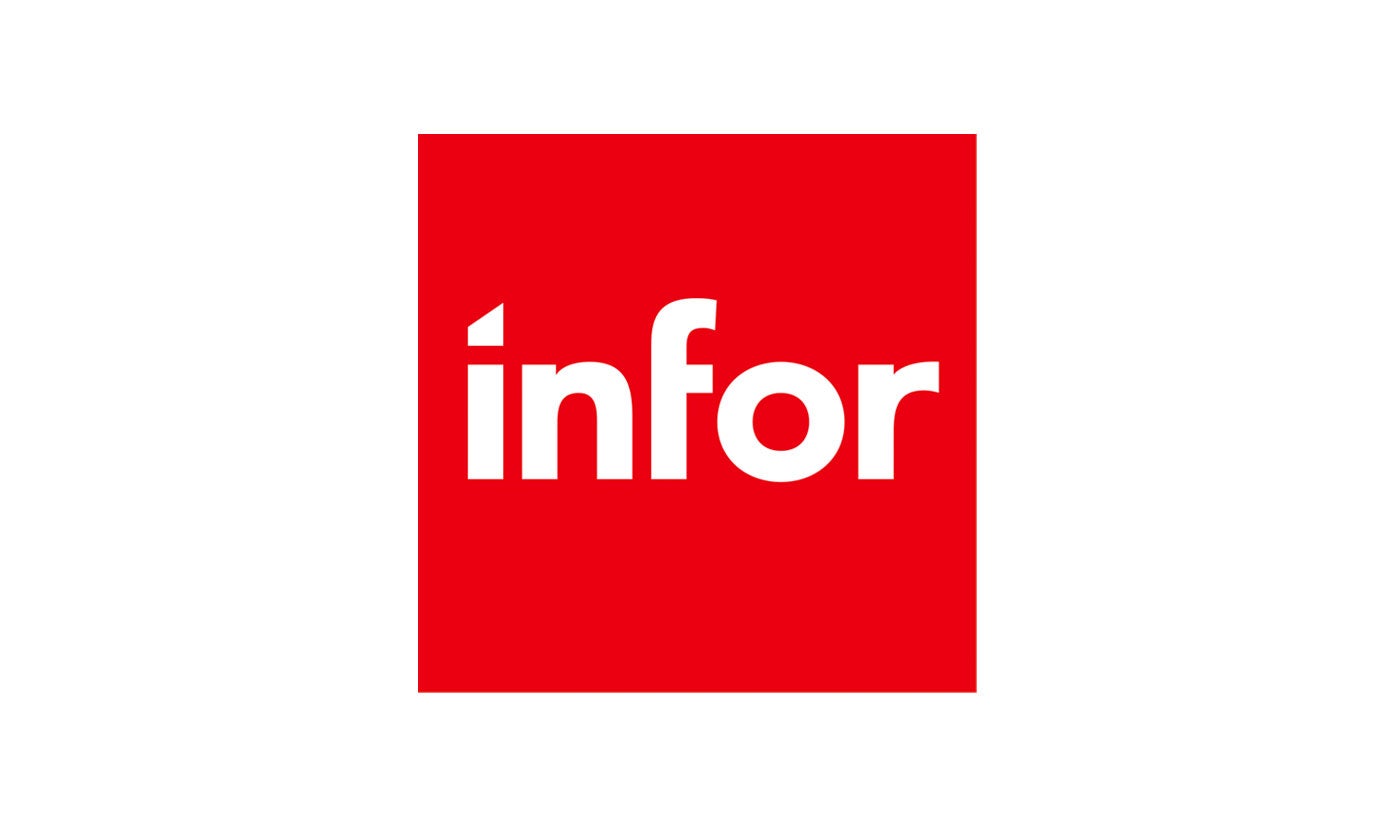
The combined power of iCIMS and Infor helps organizations strategically align their business and talent objectives.

Our award-winning partnership with Microsoft is grounded in a shared desire to transform the workplace and the hiring team experience.
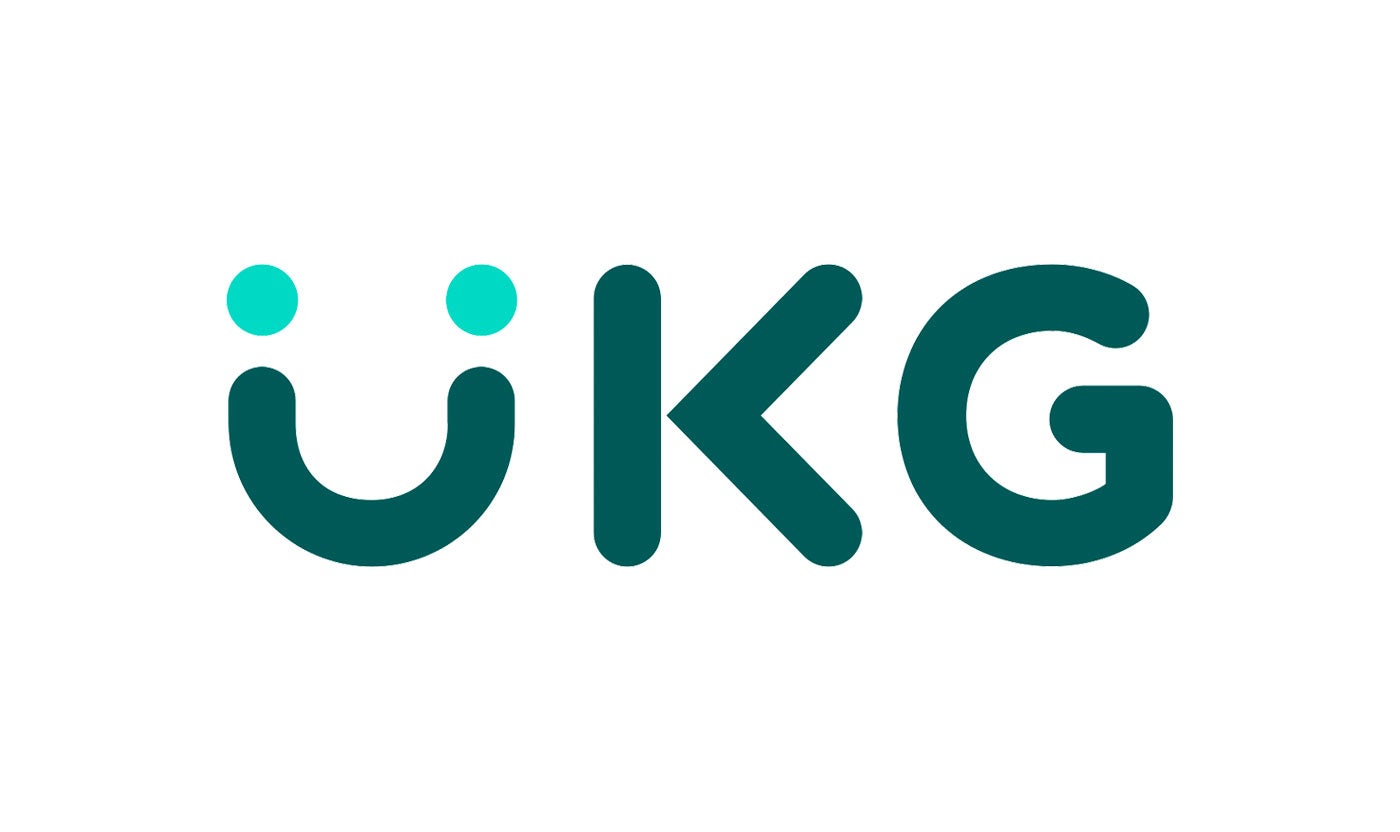
Our partnership with Ultimate Kronos Group (UKG) supports the entire talent lifecycle by bringing frictionless recruiting solutions to UKG Pro Onboarding.
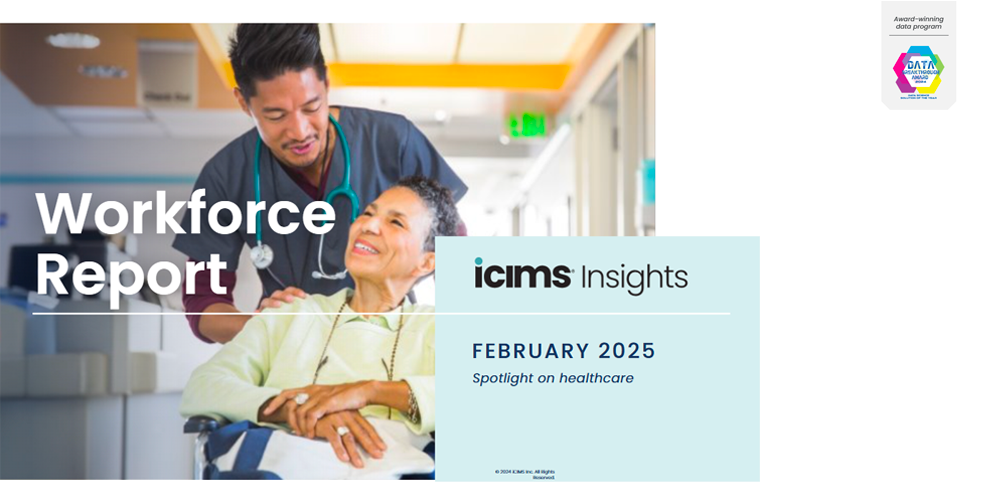
The labor market is shaking off its winter slumber as activity begins to pick up after a period of dormancy. Both employers and candidates seem to be cautiously emerging from their recent hibernation, hinting at potential shifts in hiring dynamics. This month’s workforce report looks at:
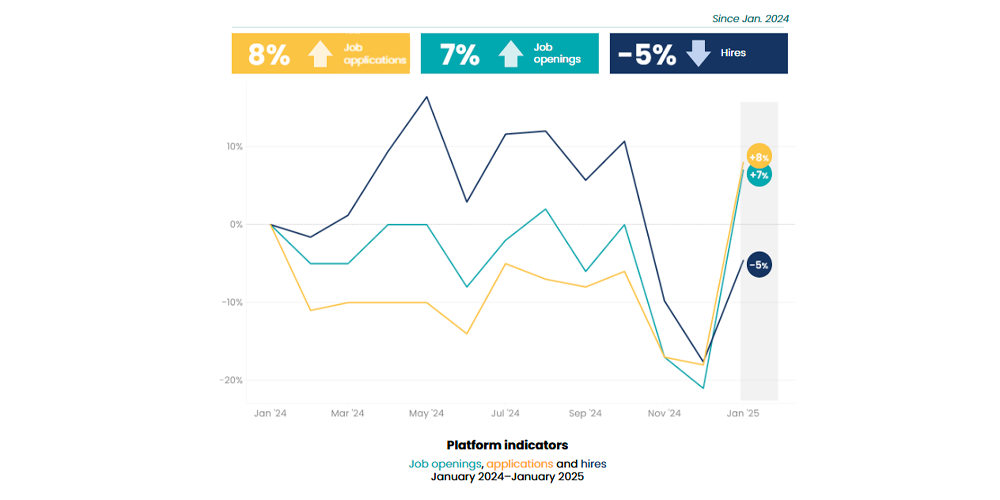
After a slowdown in November and December, the job market sprang back to life in January. Job openings rose 35% month over month, with applications following closely behind, up 32%.
But despite this burst of activity, hiring hasn’t caught up yet. Could this uptick in openings signal a forthcoming hiring wave in the coming months? Only time will tell.
A possible reason for the lag in hires may be a shrinking pool of qualified candidates. Unemployment dropped to its lowest level since May 2024, and a recent iCIMS survey revealed that nearly 60% of workers aren’t planning to job hunt in 2025.
This tightening talent market suggests a complicated yet intriguing dynamic to start the new year. As 2025 unfolds, it will be interesting to see whether organizations can effectively bridge the gap between openings and hires.
With an estimated 1.9 million healthcare job openings projected each year, the demand for healthcare talent isn’t slowing down anytime soon. But who’s applying, and how are employers filling these roles?
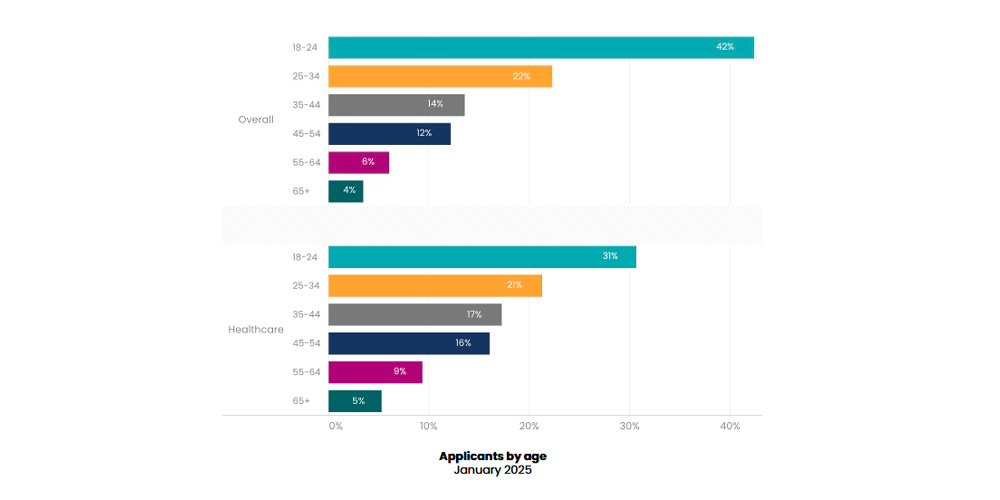
Gen Z has become the dominant force in the overall job market—with 64% of all applicants under 35. But healthcare skews slightly older—with just over half (52%) in this age bracket. As older workers aged 55 and up continue to retire, vacant positions are leading to shortages across the industry.
It’s worth monitoring to see if healthcare can adapt quickly enough to these changes to avoid critical staffing issues and if the influx of Gen Z talent will be sufficient to bridge the gaps left by retiring professionals.
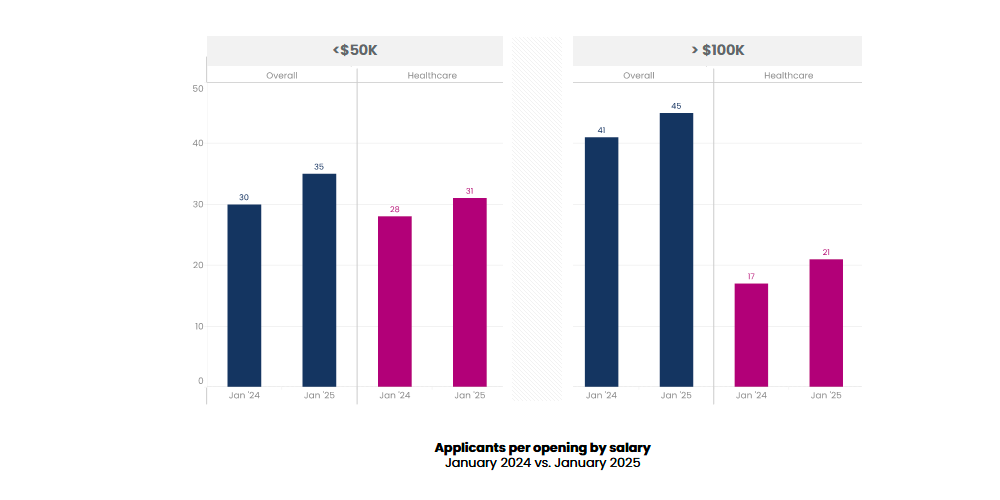
Low pay isn’t keeping applicants away. Applications per opening (APO) for healthcare jobs under $50K has inched up year over year but still trails behind similar-paying roles in other industries. These jobs include home health and personal care aides ($33,530), pharmacy technicians ($40,300) and EMTs and paramedics ($44,780).
But the pattern flips for higher-paying positions—APO for six-figure healthcare jobs remains much lower than the overall market.
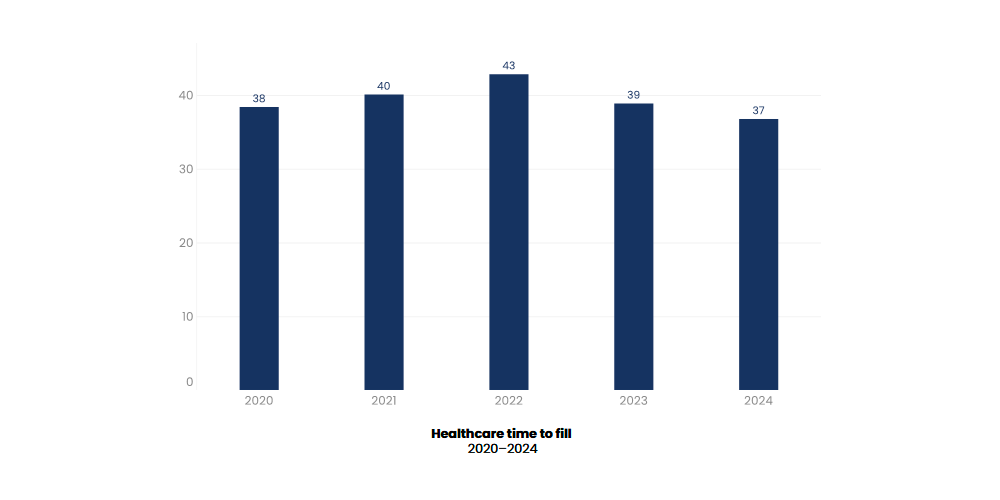
Healthcare jobs are filling quickly, averaging 37 days in 2024—the shortest time-to-fill we’ve seen in five years. That’s down from about six weeks just two years ago.
For employers, this means new hires are getting in seat faster, helping to keep up with demand and close staffing gaps.
Download the full February Workforce Report.

Rhea Moss is director of customer experience and data insights at iCIMS. She oversees the iCIMS Insights program, which aggregates and anonymizes the billions of data points iCIMS’ software processes per year and transforms them into actionable insights to help drive business and hiring strategies. Previously, Rhea was head of products at prescriptive data, and served as product and program managers at MongoDB and Thomson Reuters.




